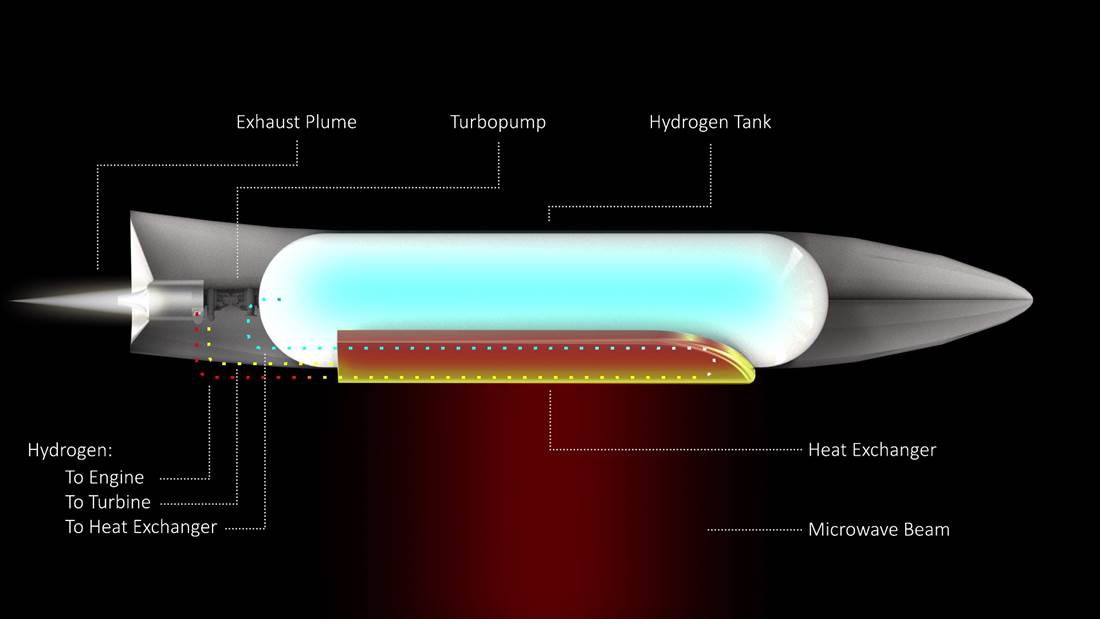Escape Dynamics Is Working On A Rocket Powered By Microwaves
I have covered a lot of different propulsion systems in this blog for launching payloads into Earth orbit and beyond. These either carried all their fuel or carried fuel and relied on oxygen in the atmosphere for the first part of the launch. However, there are a lot of other systems for launching space missions in which the actual power for the launch is external to the launch vehicle. Today I am going to talk about a company that proposed the use of a beam of microwaves from a ground station to provide energy for the propulsive thrust for the launch.
Escape Dynamics is a startup company located in Colorado. They have just announced a successful test of their prototype engine and are getting ready to move to the next phase. The engine prototype did not use conventional fuel combinations but generated thrust by using microwaves beamed at it to heat hydrogen. ED says that combusting chemical rockets are too expensive and do not provide "routine, on-demand launch capabilities."
The ED system will include a huge set of batteries that draws energy from the electrical grid to charge. Once they are fully charged, electrical current will be sent to a set of modular, phased array microwave antenna that will cover about four tenths of a square mile. The antenna array will fire a beam of microwaves at the heat exchanger of a spacecraft that is ready for launch. The heat from the heat exchanger will heat hydrogen in tanks on the spacecraft. The hydrogen will expand and be expelled from the rear of the ship to provide the thrust for the launch.
The use of electricity from the grid for power will result in a much more efficient and cheaper cost per launch than using fuel and oxidizer that are burned to provide thrust. The efficiency of rockets is measured in what is called their "specific impulse" which is the ratio of the thrust a rocket engine provides to the "weight flow" of the fuel that it consumes. Conventional chemical rockets have a specific impulse around 460. This thrust is not sufficient to carry a rocket all the way to Earth orbit so today's rockets have multiple stages and fuel tanks. These multiple stages increase the cost of launching. ED thinks that its system can produce a specific impulse of over 600. This should enable a rocket with a single stage to reach Earth orbit.
The prototype engine that they recently tested used helium for safety reasons. It generated a specific impulse of over 500. ED says that their simulations show that using hydrogen would boost the specific impulse to over 600. Next, the company will have to test fire their engine in the open air by beaming microwaves thousands of feet to hit the heat exchanger. After successfully testing this system, ED will start flying drones with microwave power. The next phase will be to construct and test an actual rocket that they can send into space but not all the way to orbit. Finally, they will build the full infrastructure necessary to send a rocket to Earth orbit and bring it back down.
The full cost of the ED system will be over a billion dollars. The company hopes to entice investors with the prospect of low cost regular launch capability that their system will provide.
Diagram of a microwave powered rocket:
Escape Dynamics Image
